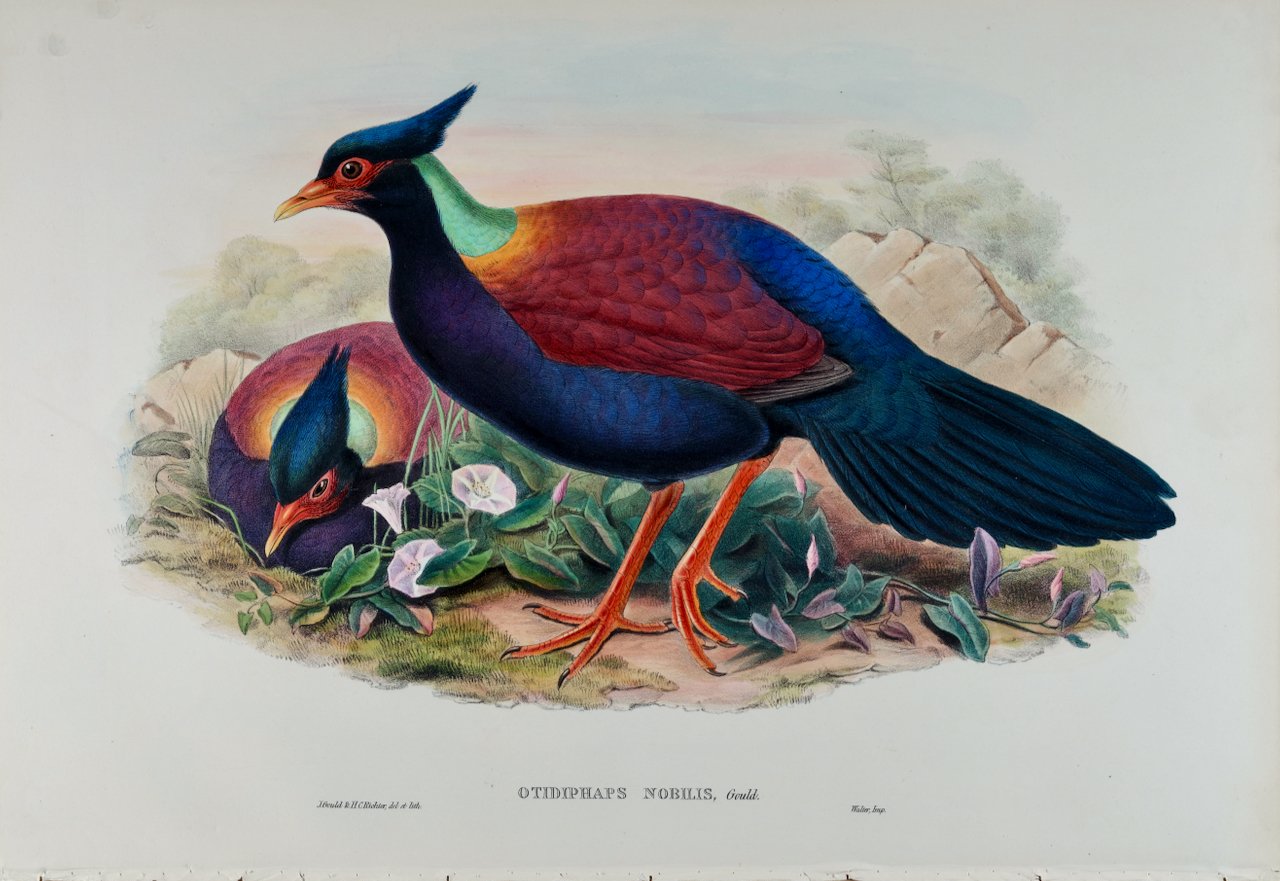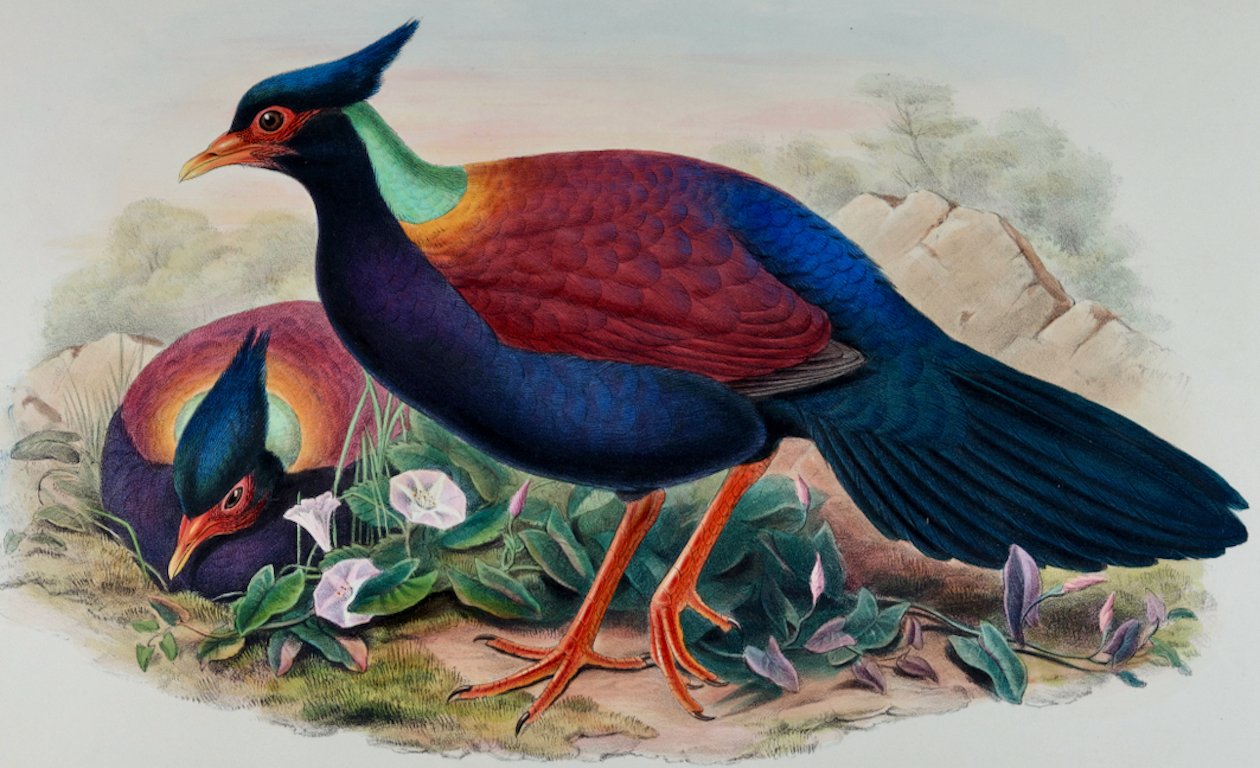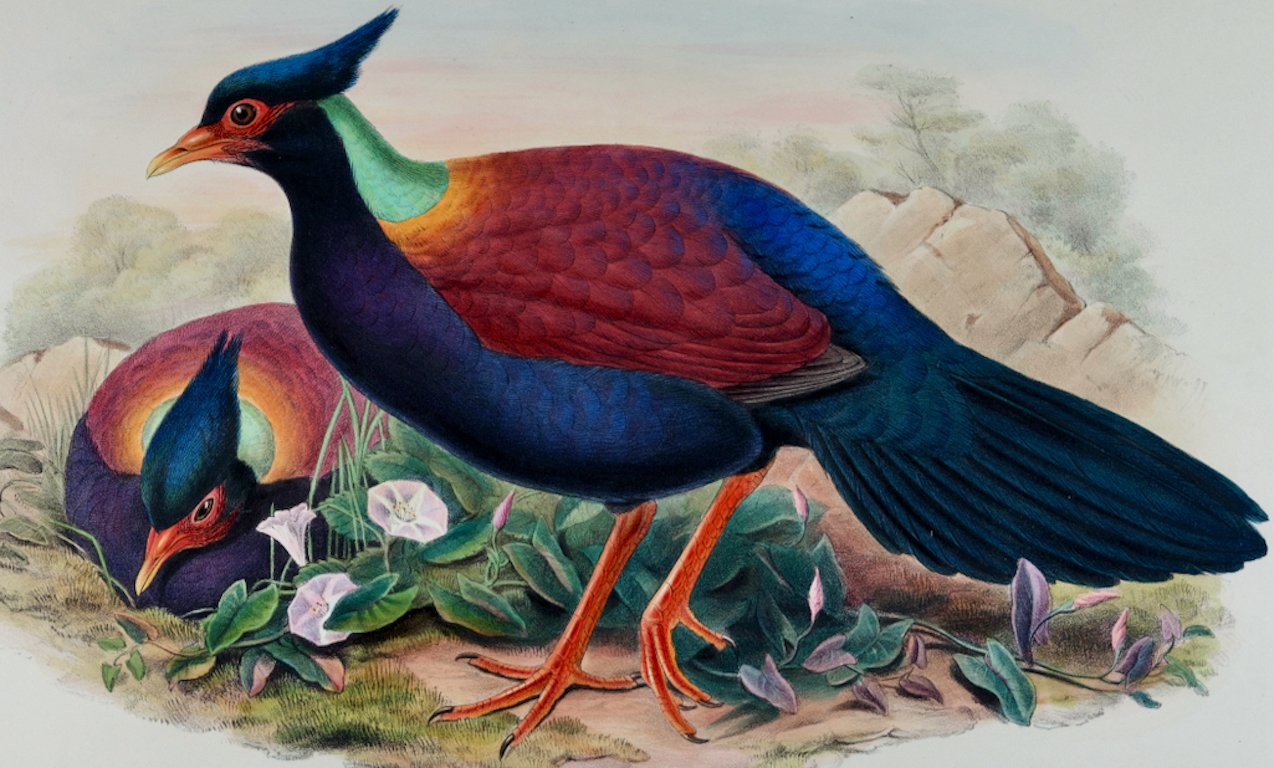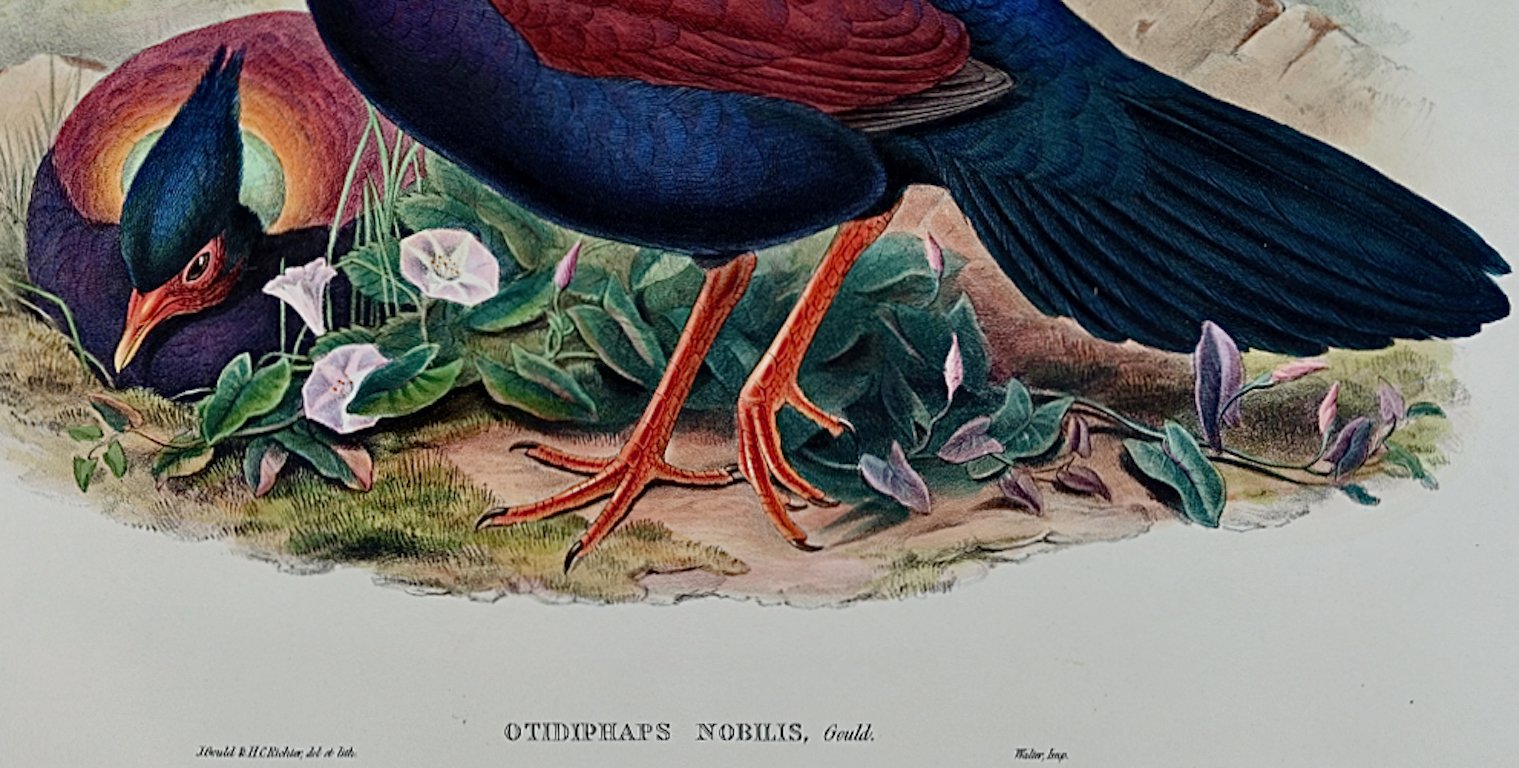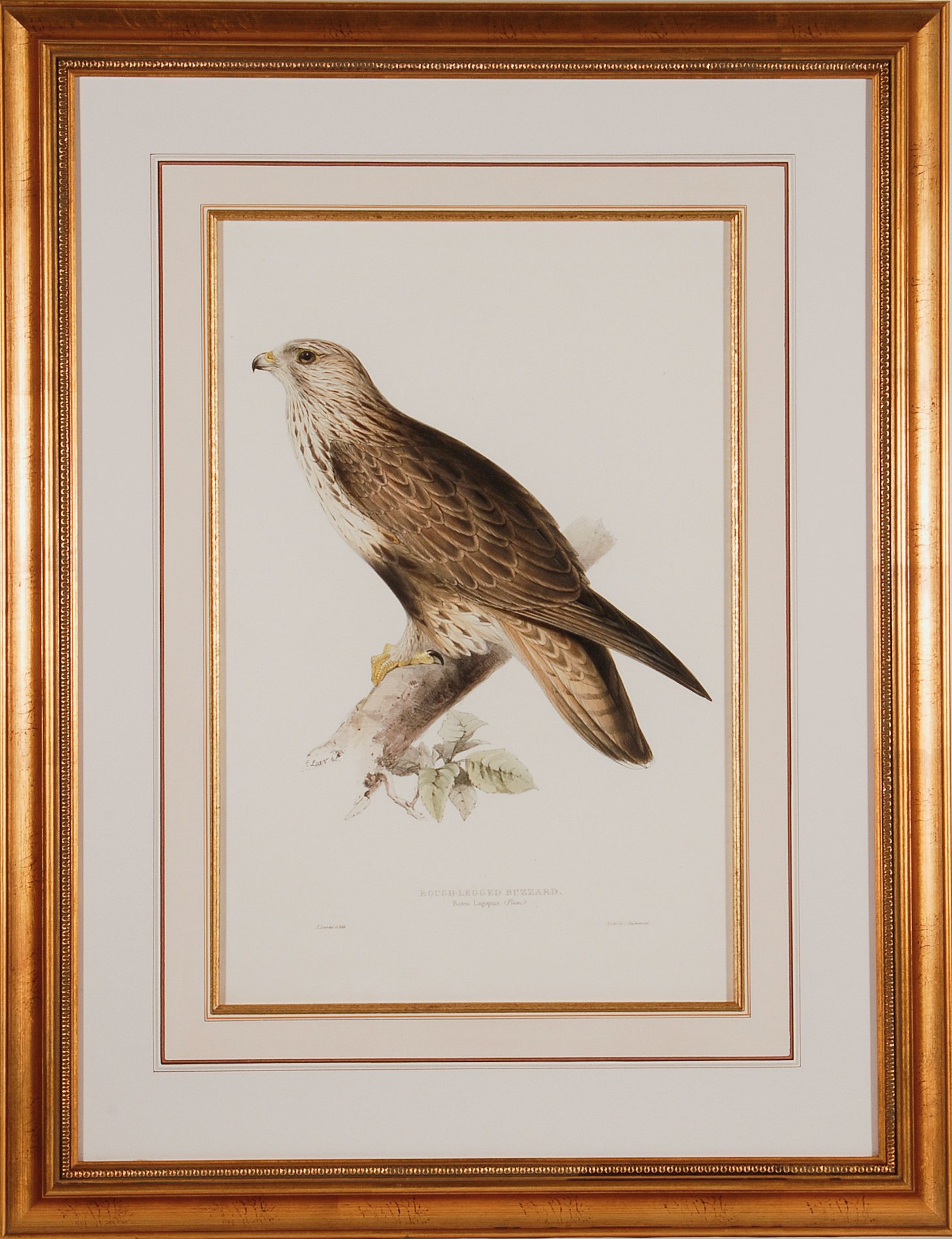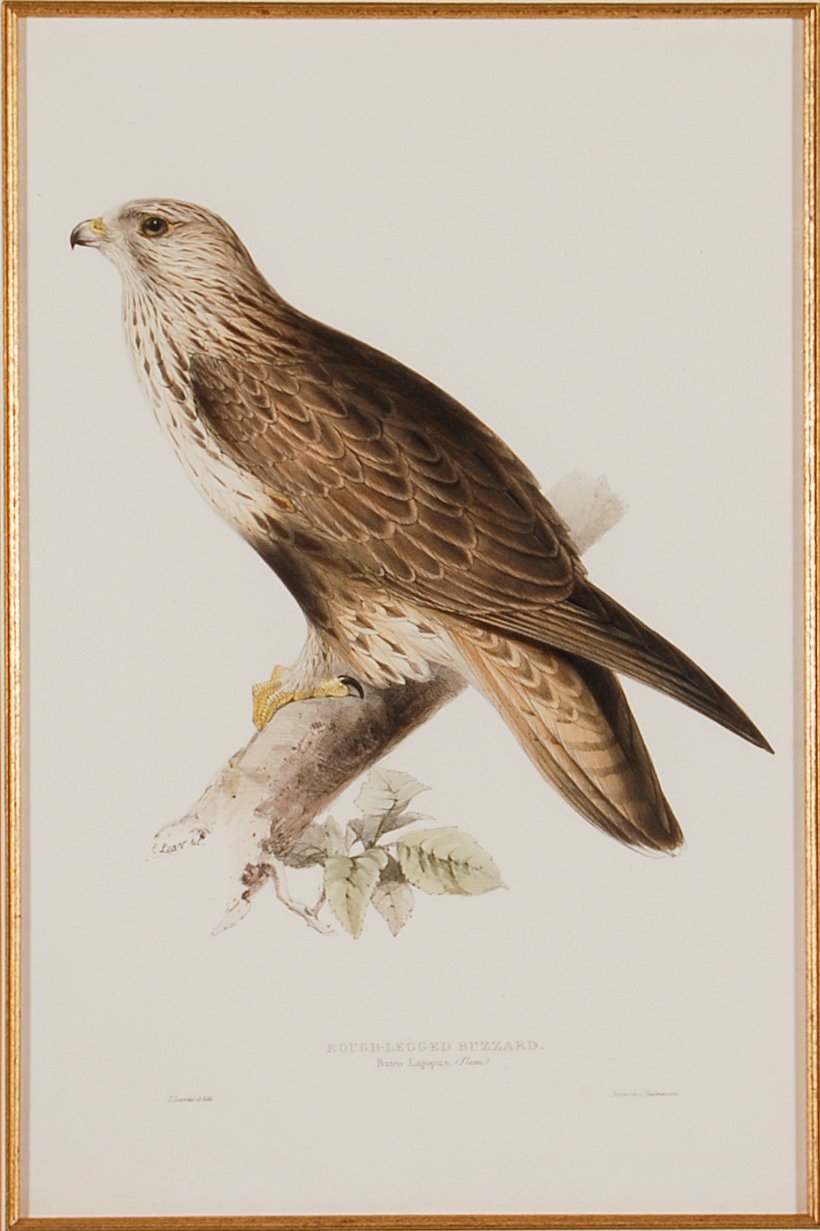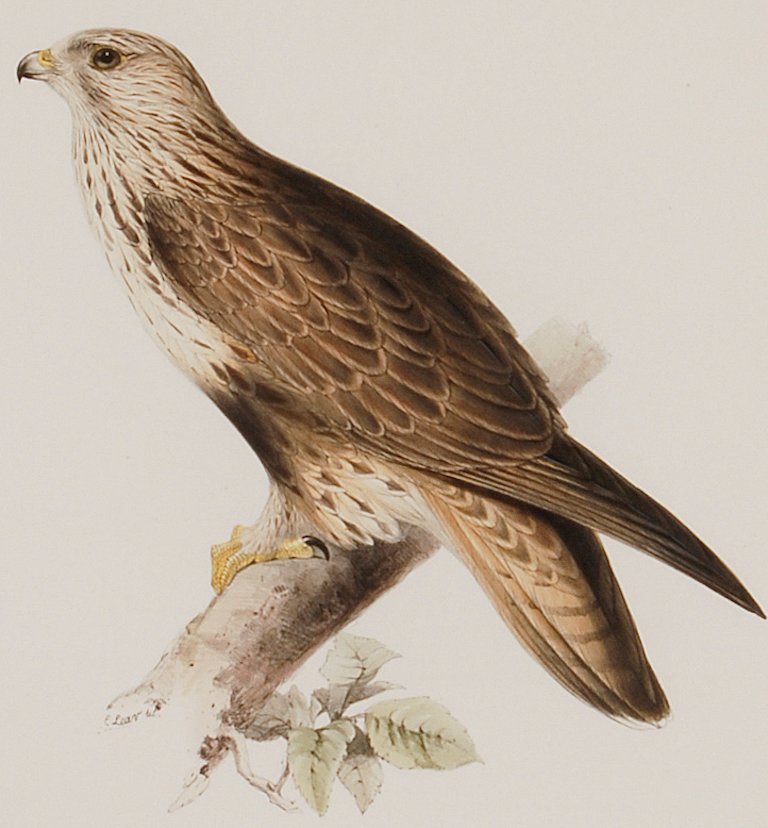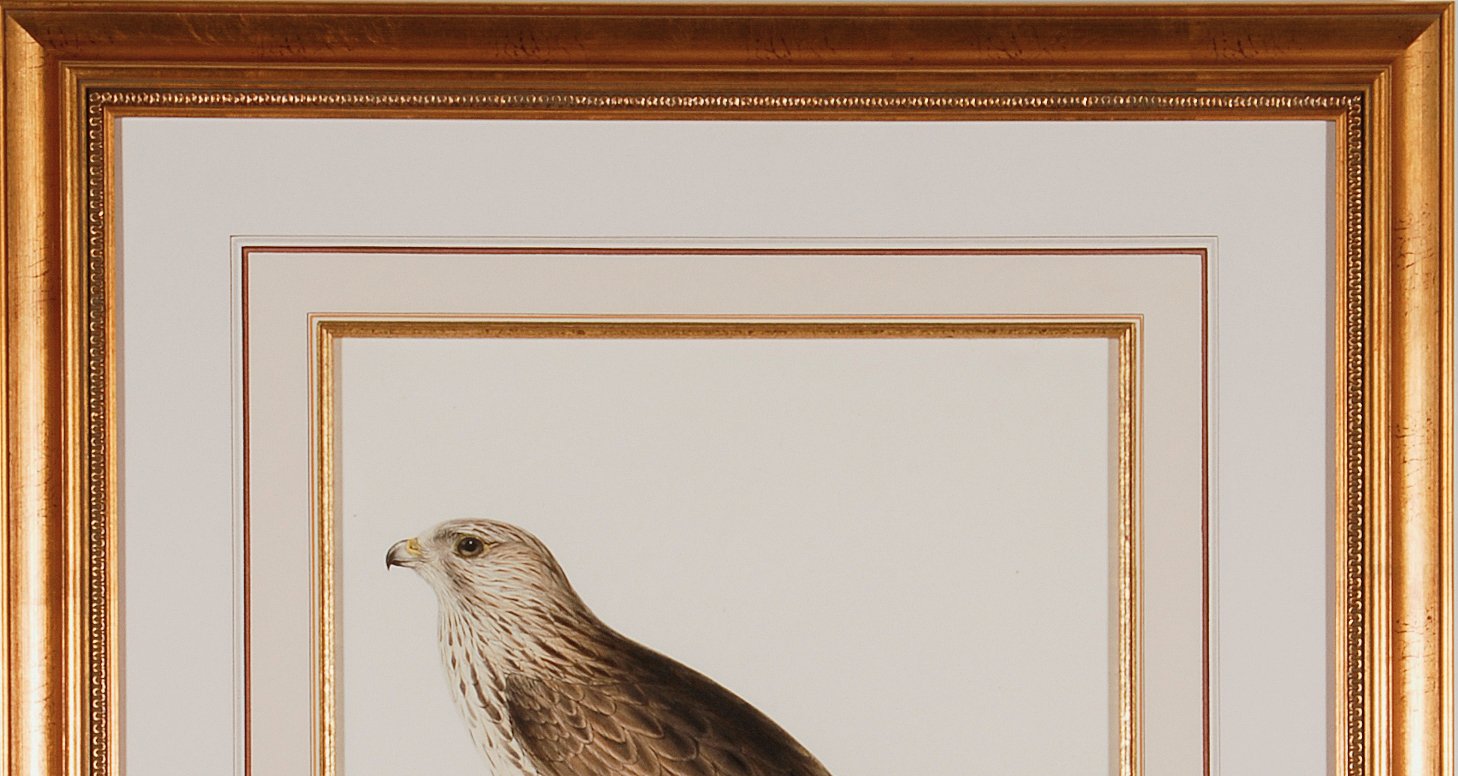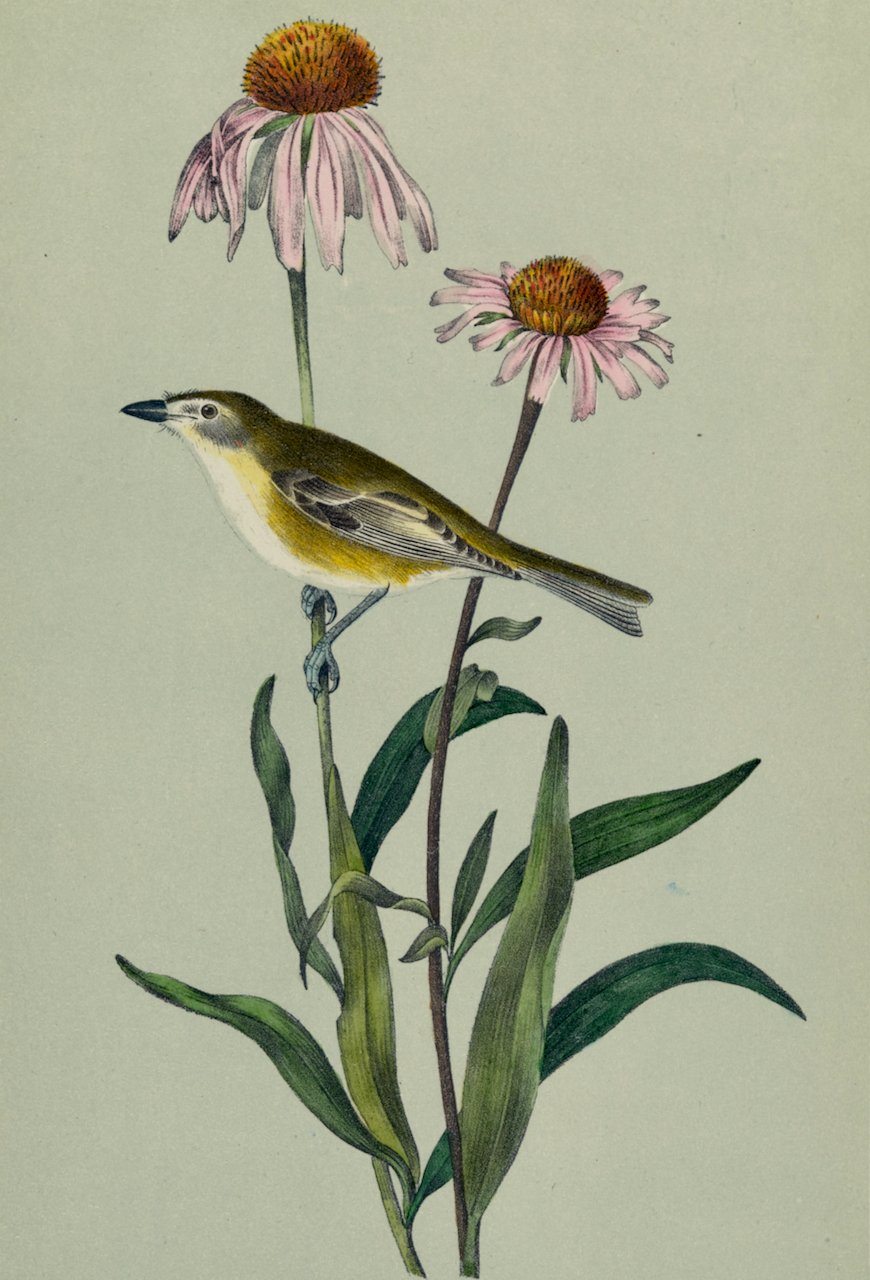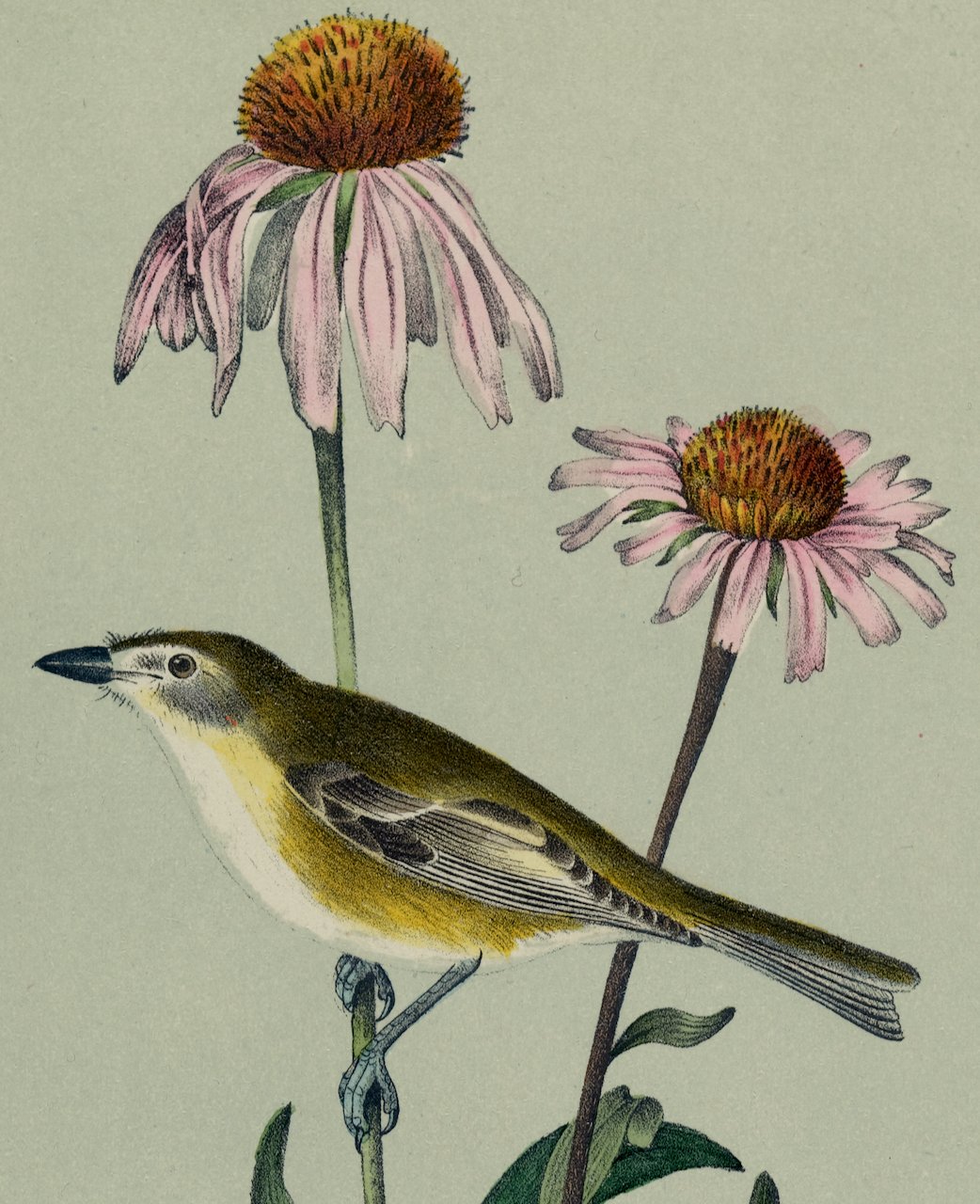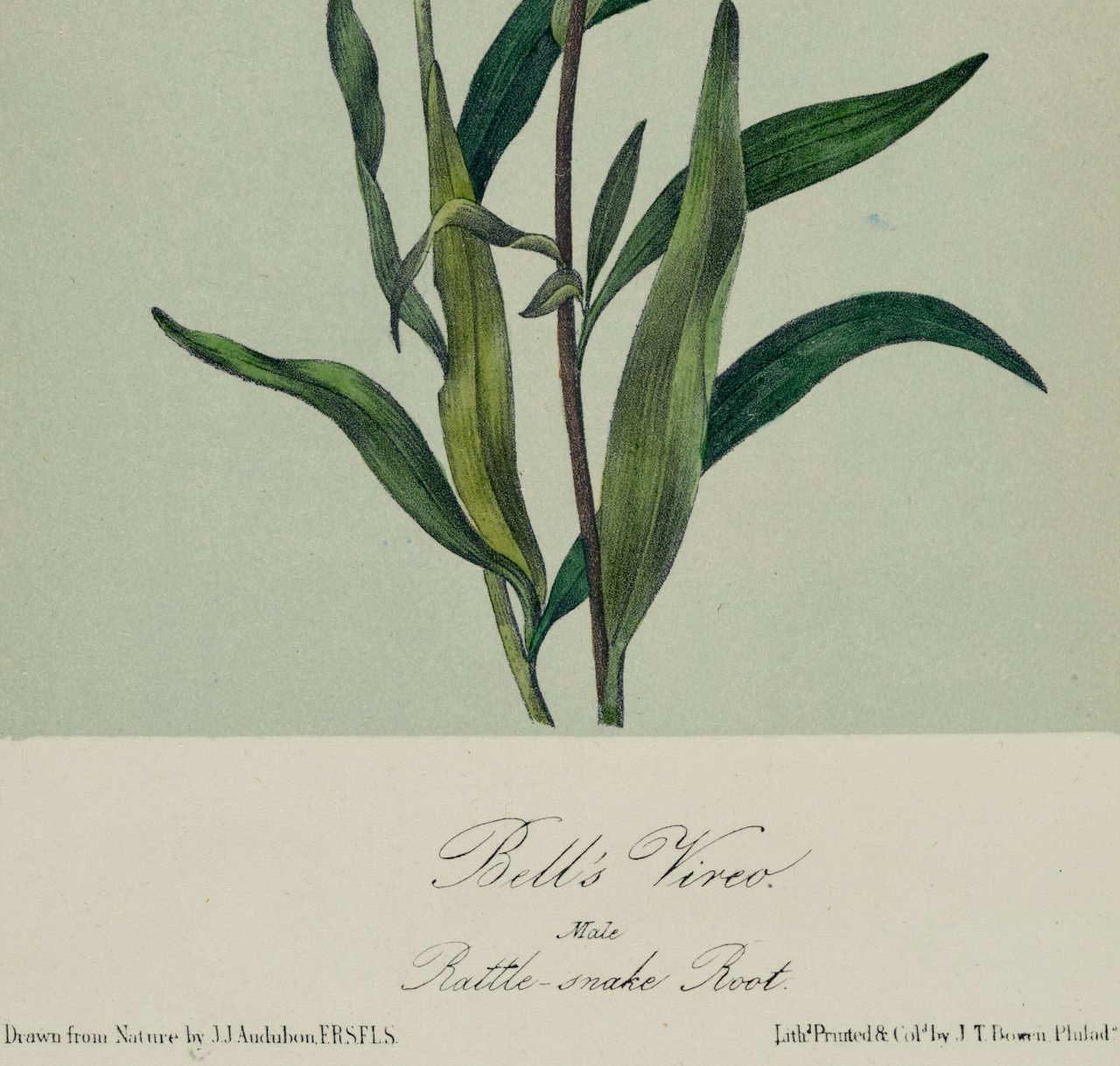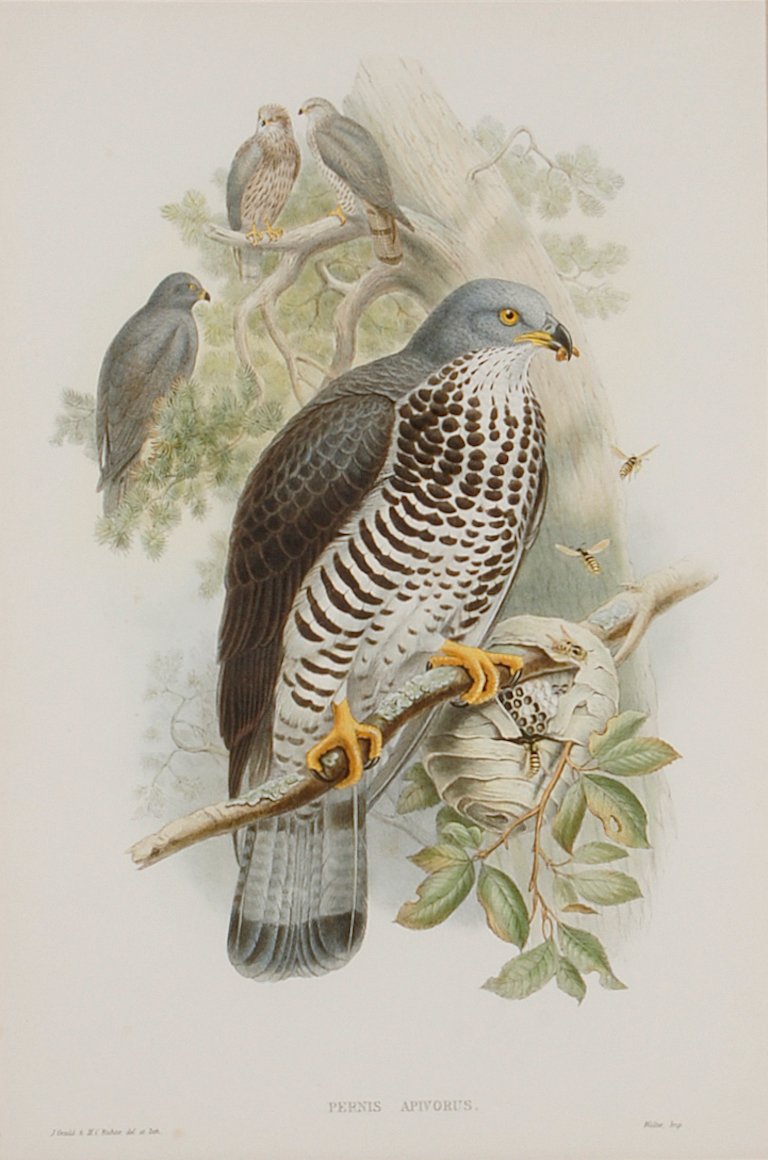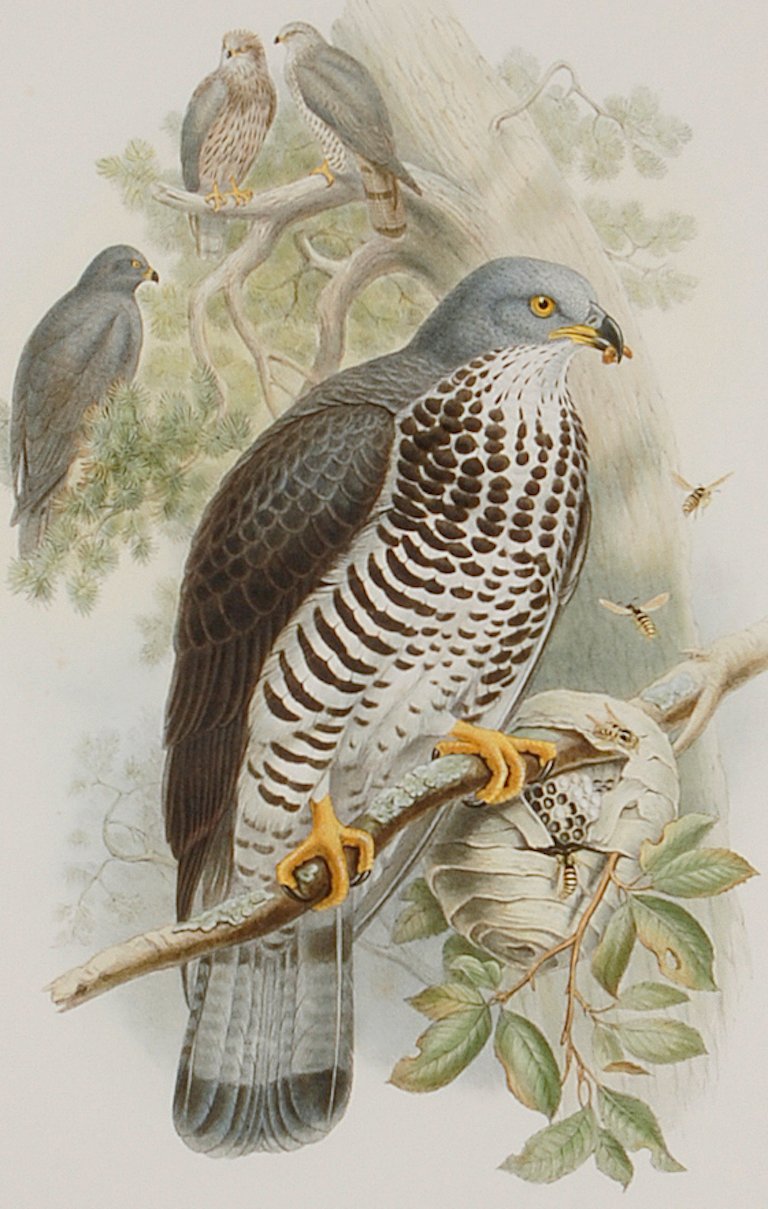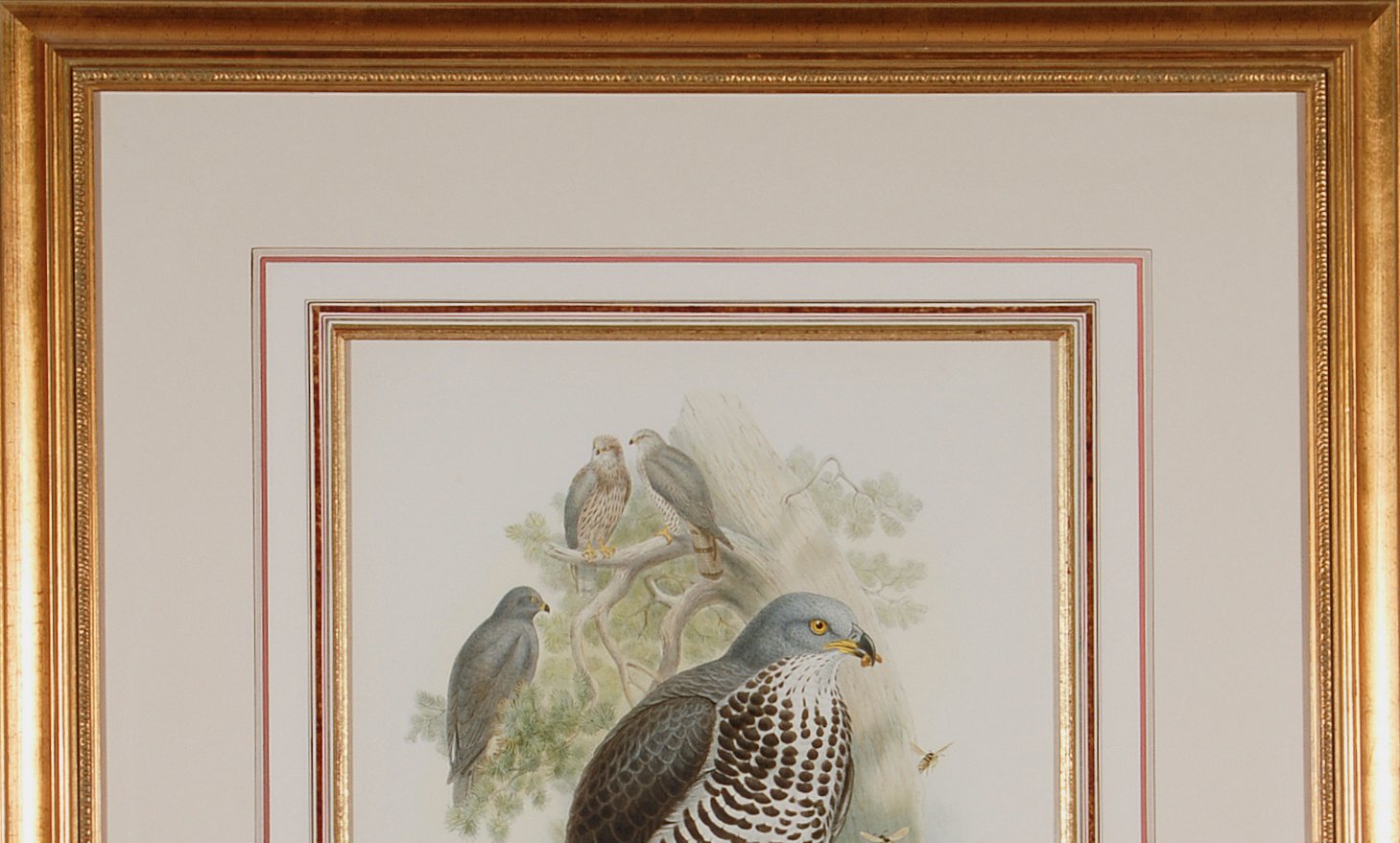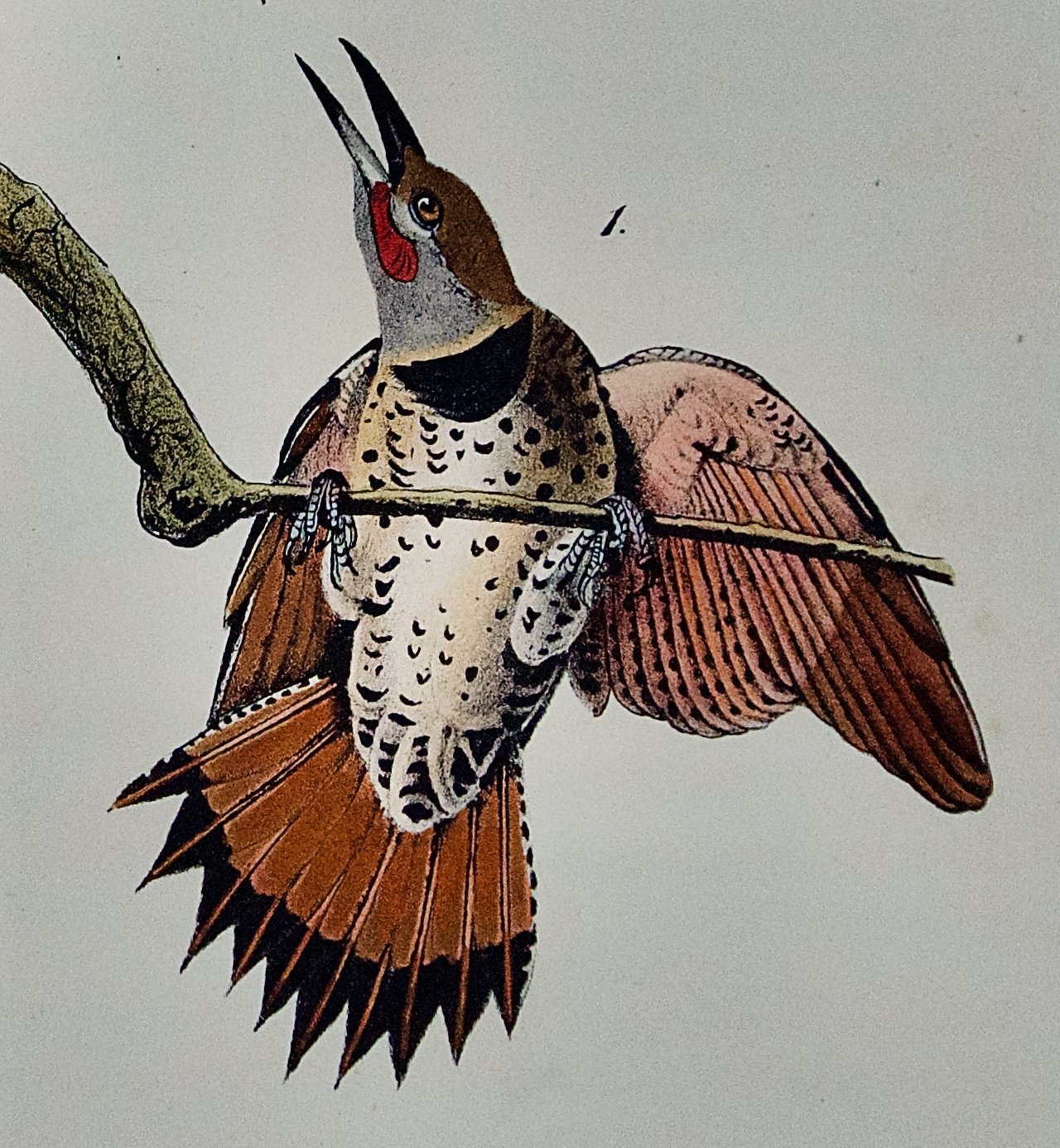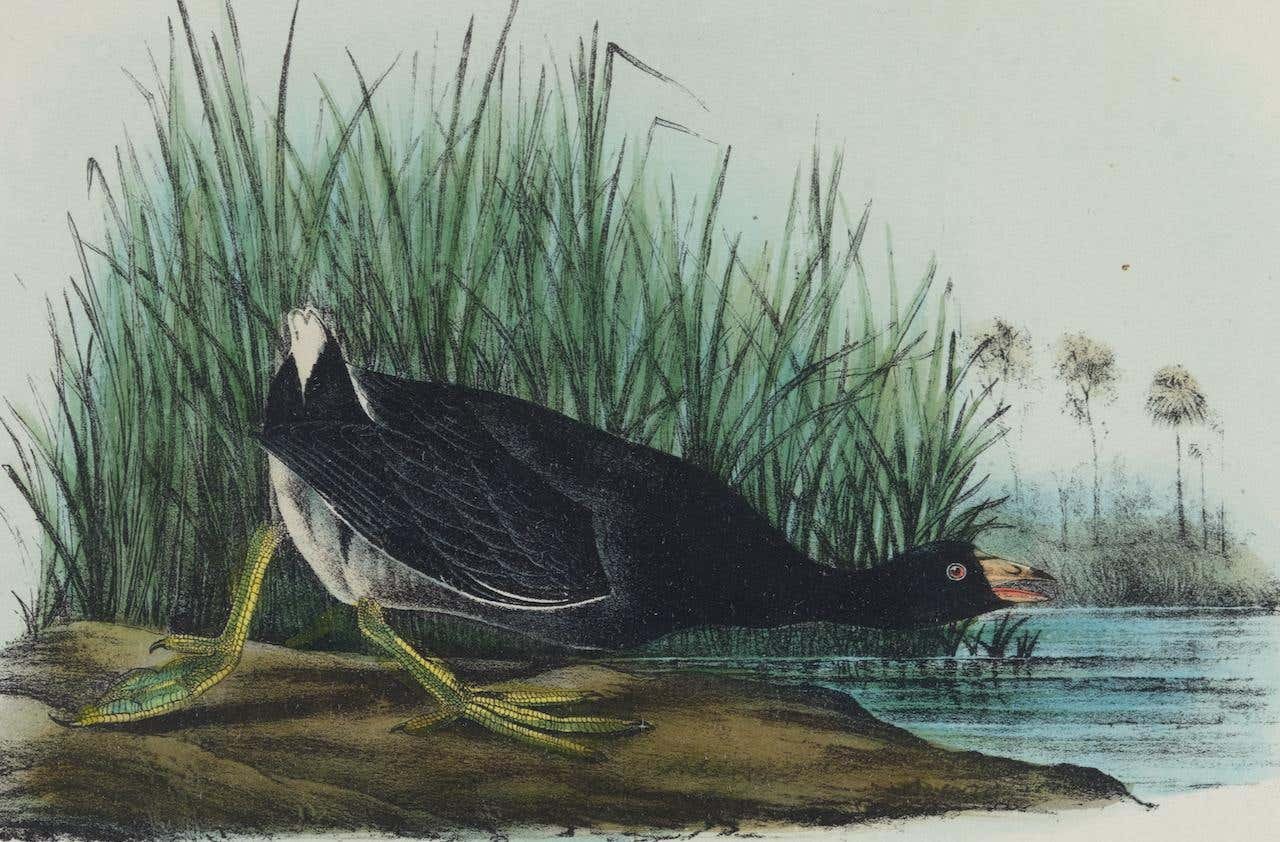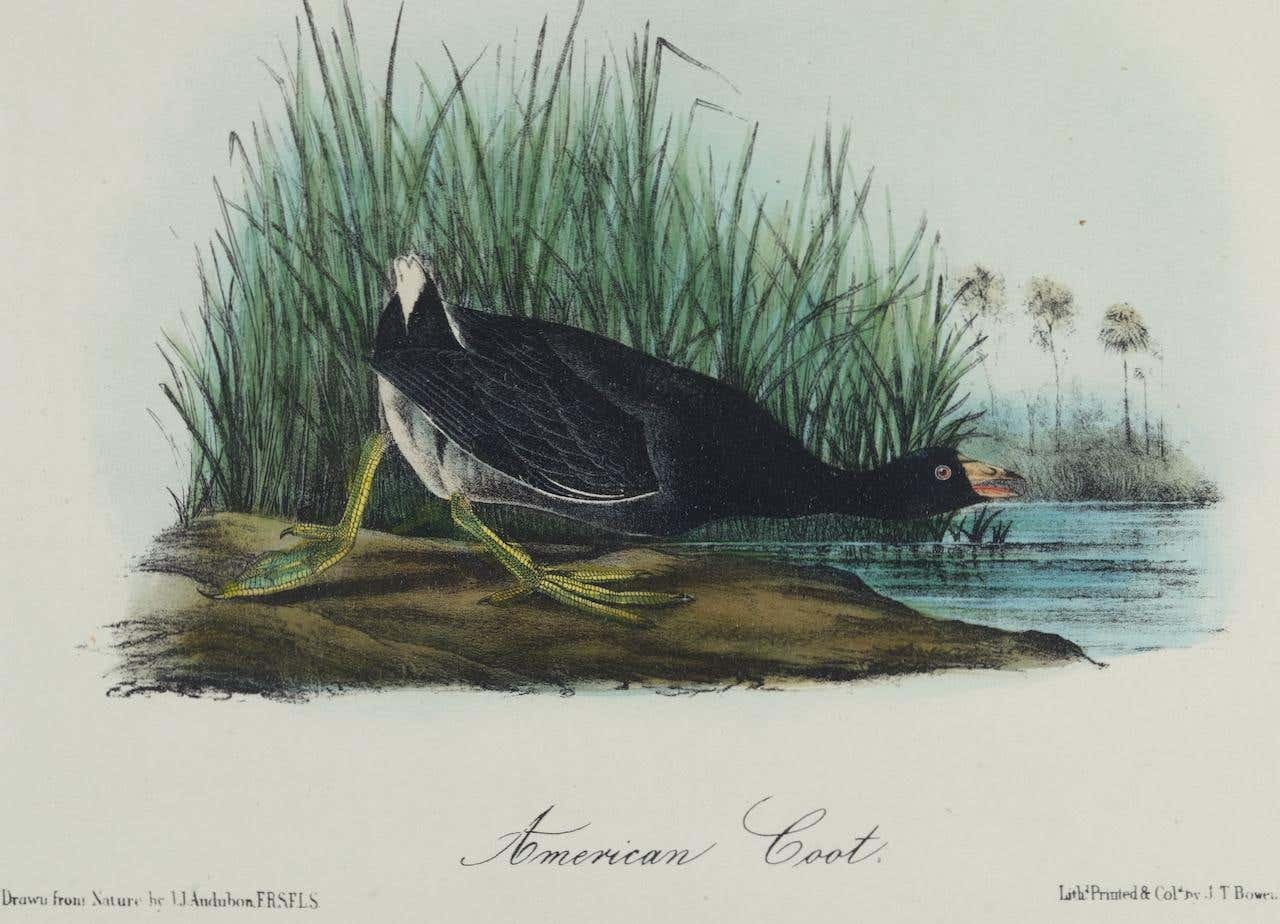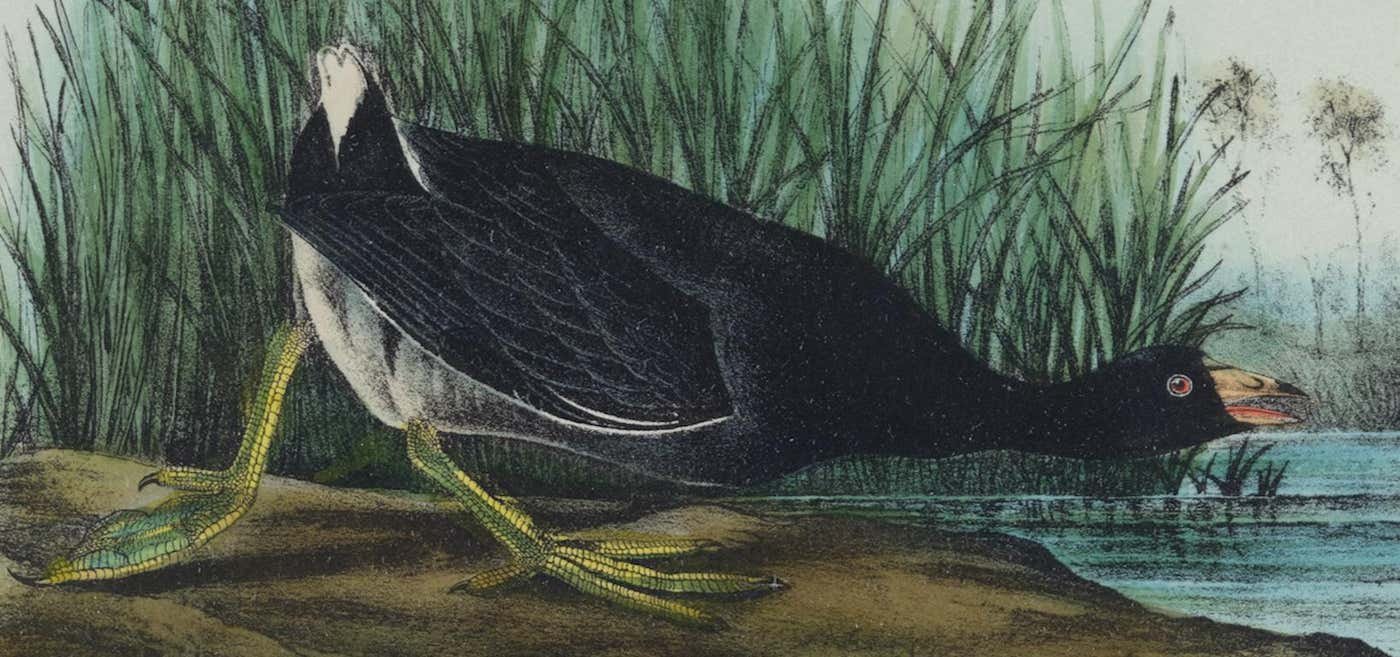Pheasant Pigeon Birds: 19th C. Folio-sized Hand-colored Lithograph by John Gould
This is a hand-colored folio-sized lithograph entitled "Otidiphaps Nobilis" (Pheasant Pigeon) by John Gould from his monograph "The Birds of Asia", published in London in 1862-1879. The print, which was drawn by Gould and H. C. Richter and lithographed by Walter, depicts two Pheasant Pigeon birds in their natural habitat. One is standing on the ground facing to the left. Another, on the left, is lying on the ground. A flowering plant (possibly Morning Glory) covers most of the ground. Hills and mountains are seen in the background.
Creator: John Gould and Henry Constantine Richter (1804 - 1881, English)
Creation Year: 1850
Dimensions: Height: 14.63 in (37.17 cm) Width: 21.25 in (53.98 cm)
Medium: Lithograph
Condition: See description below.
Reference #: 5029
This is a hand-colored folio-sized lithograph entitled "Otidiphaps Nobilis" (Pheasant Pigeon) by John Gould from his monograph "The Birds of Asia", published in London in 1862-1879. The print, which was drawn by Gould and H. C. Richter and lithographed by Walter, depicts two Pheasant Pigeon birds in their natural habitat. One is standing on the ground facing to the left. Another, on the left, is lying on the ground. A flowering plant (possibly Morning Glory) covers most of the ground. Hills and mountains are seen in the background.
Creator: John Gould and Henry Constantine Richter (1804 - 1881, English)
Creation Year: 1850
Dimensions: Height: 14.63 in (37.17 cm) Width: 21.25 in (53.98 cm)
Medium: Lithograph
Condition: See description below.
Reference #: 5029
This is a hand-colored folio-sized lithograph entitled "Otidiphaps Nobilis" (Pheasant Pigeon) by John Gould from his monograph "The Birds of Asia", published in London in 1862-1879. The print, which was drawn by Gould and H. C. Richter and lithographed by Walter, depicts two Pheasant Pigeon birds in their natural habitat. One is standing on the ground facing to the left. Another, on the left, is lying on the ground. A flowering plant (possibly Morning Glory) covers most of the ground. Hills and mountains are seen in the background.
Creator: John Gould and Henry Constantine Richter (1804 - 1881, English)
Creation Year: 1850
Dimensions: Height: 14.63 in (37.17 cm) Width: 21.25 in (53.98 cm)
Medium: Lithograph
Condition: See description below.
Reference #: 5029
This striking Gould hand-colored Pheasant Pigeon lithograph measures 14.63" high and 21.25" wide. There are punctate holes along the lower edge where the print was previously bound in the 19th century publication. The print is otherwise in excellent condition. The original descriptive text page from the 19th century publication is included.
There are several other Gould bird lithographs available in our inventory, both framed and unframed. Two or more of these would make a striking display grouping. A discount is available for purchase of a set depending on the number. Some of these lithograph are available online on 1stdibs and our website, but many of them are not yet listed online. Please let us know if you are interested in seeing additional examples.
Artist: John Gould (1804-1881]) was an English ornithologist and artist. He, like his American contemporary John James Audubon, published a number of books on birds in the mid 19th century, illustrated by hand-colored lithographs. His wife and fellow artist, Elizabeth Gould, and several other artists including Edward Lear and Henry Constantine Richter produced lithographs for his various publications. He has been considered the father of bird study in Australia and the Gould League in Australia is named after him. Charles Darwin referenced Gould’s work in his book, "On the Origin of Species" and Gould named a bird after Darwin; "Darwin's finches".
Gould began his career in London as a taxidermist, but in 1827 became the first curator and conservator at the museum of the Zoological Society of London. In this position naturalists brought him collections of birds from all over the world. He began creating drawings and eventually hand-colored lithographs with his wife and Edward Lear, which were the basis for his first publications. Darwin brought him specimens from the Galapagos Islands, including 12 species of finches which had never been described. In 1838, Gould and his wife travelled to Australia and their work led to the seven volume publication of “The Birds of Australia”. Gould had a fascination for hummingbirds and collected specimens of 320 varieties before ever seeing a live hummingbird on a trip to the United States in 1857. He eventually published “A Monograph of the Trochilidae, or Family of Humming-birds". Other large publications include: "The Birds of Europe"," A Monograph of the Ramphastidae, or Family of Toucans”, “A Synopsis of the Birds of Australia, and the Adjacent Islands”, “A Monograph of the Odontophorinae, or Partridges of America”, “The Birds of Asia”, “The Birds of Great Britain” and "The Birds of New Guinea and the Adjacent Papuan Islands, including many new species recently discovered in Australia".

